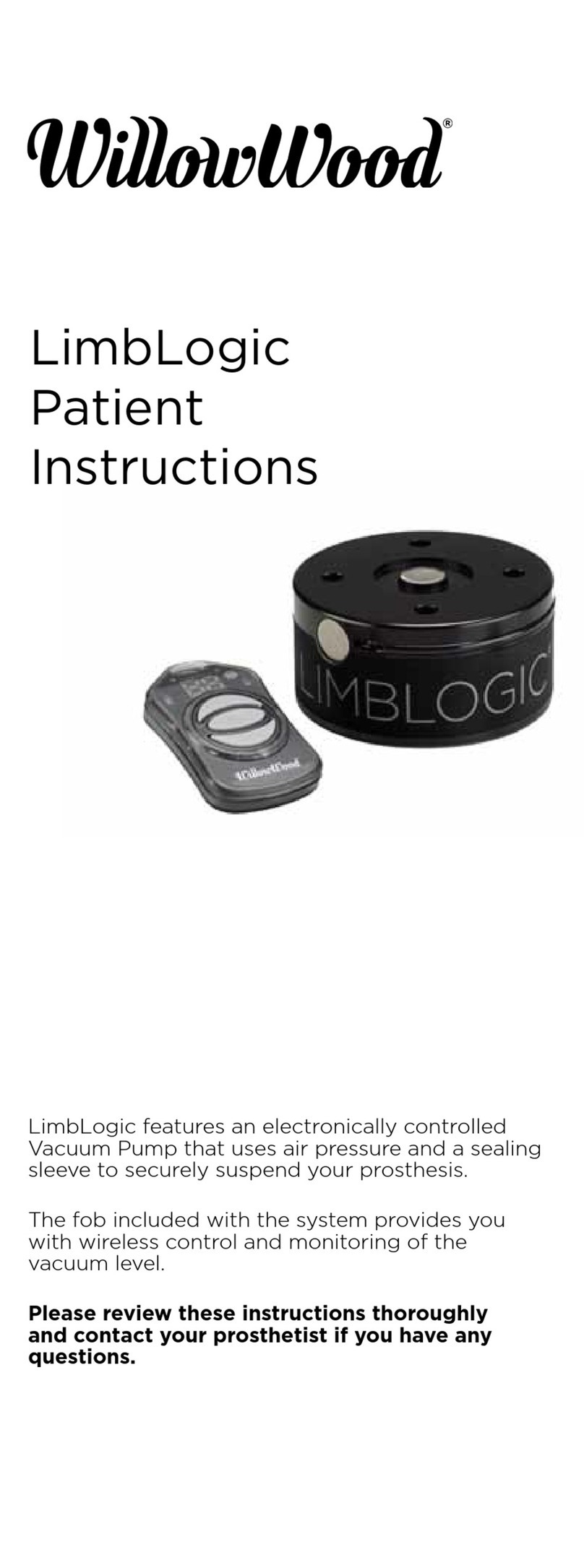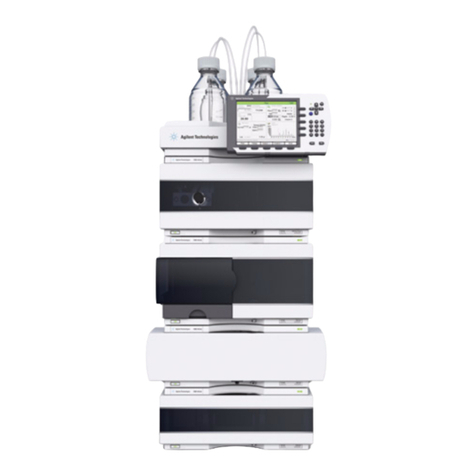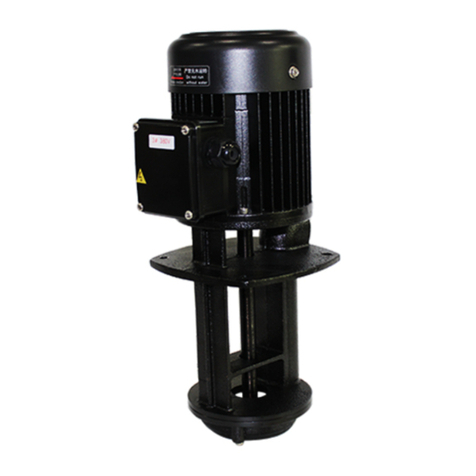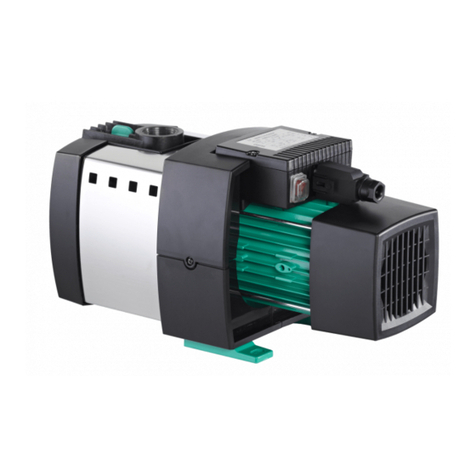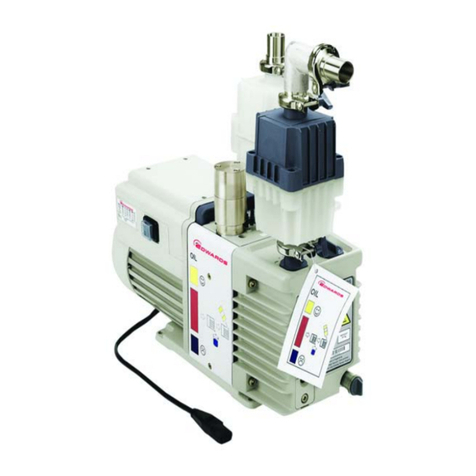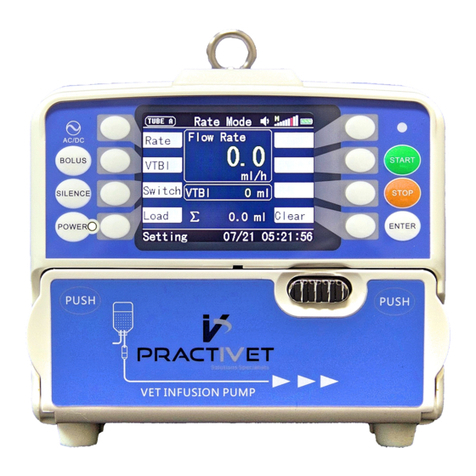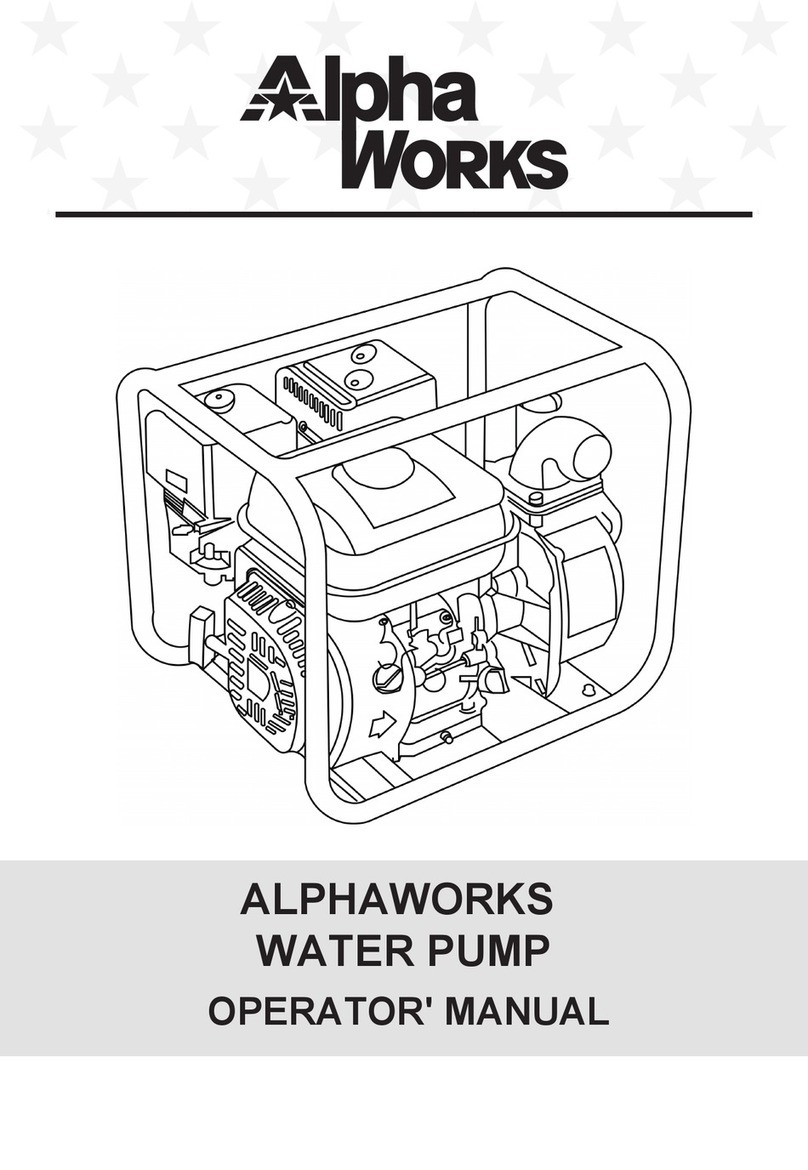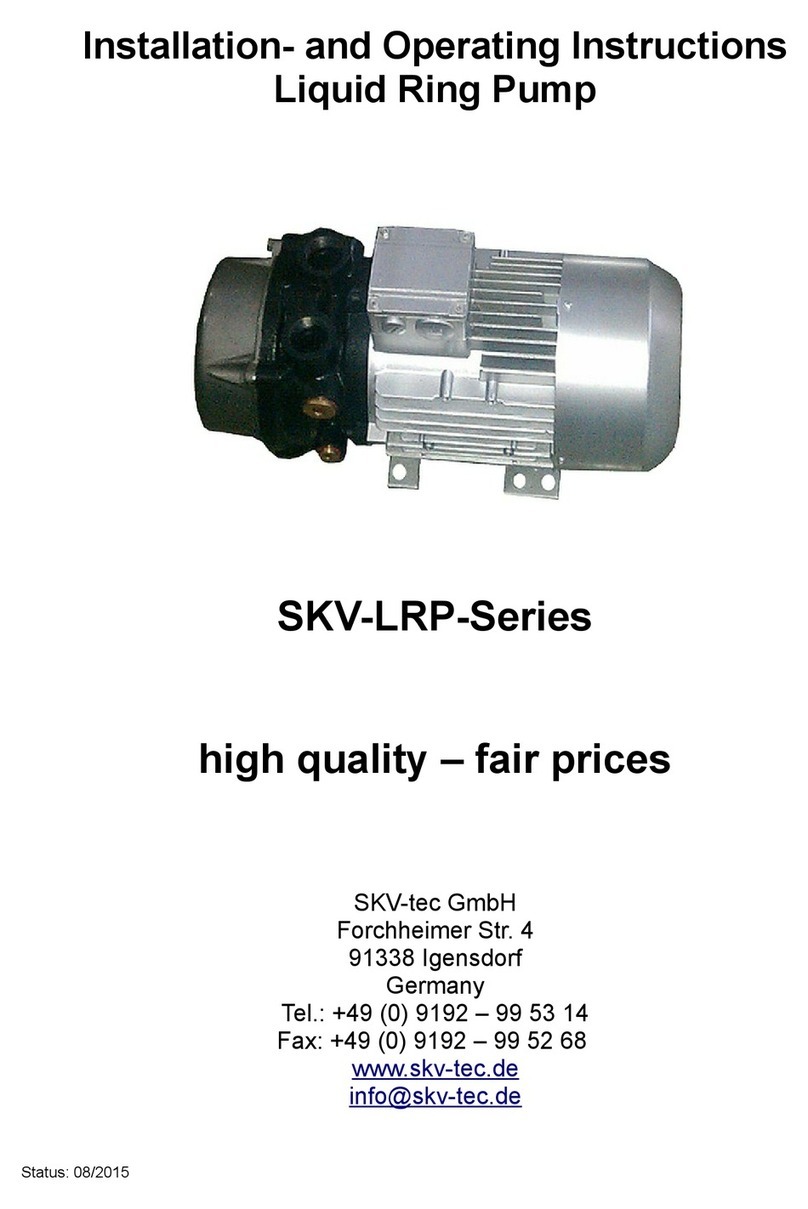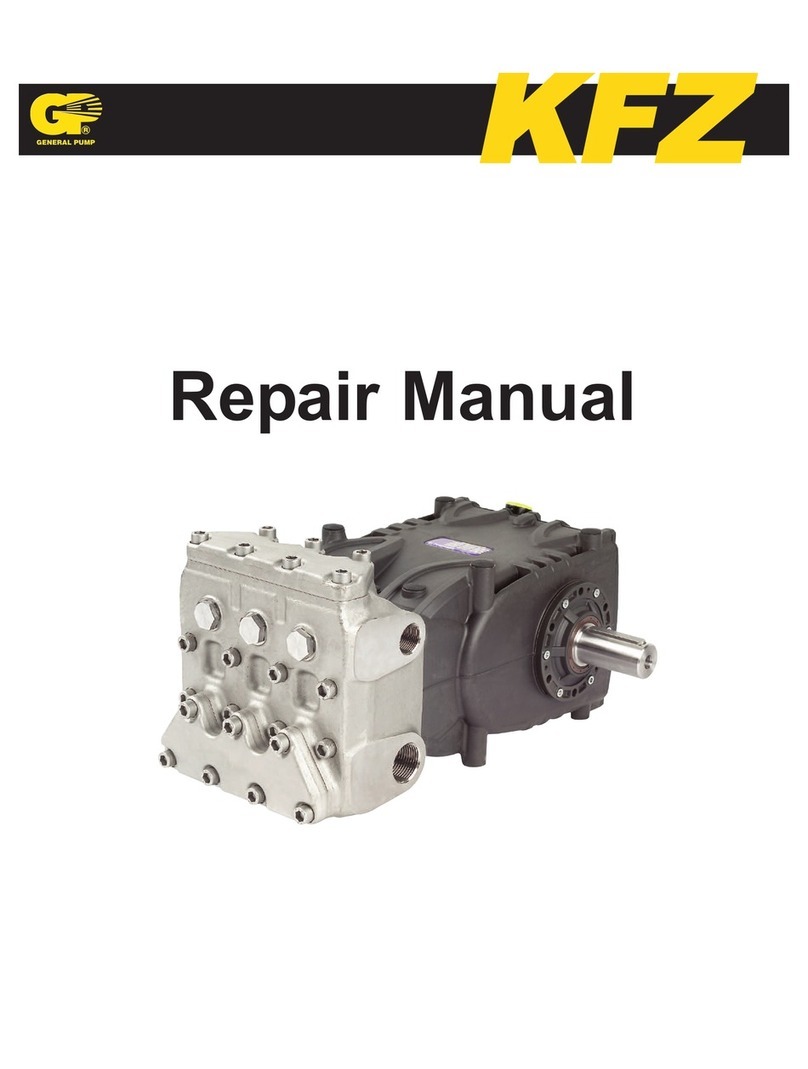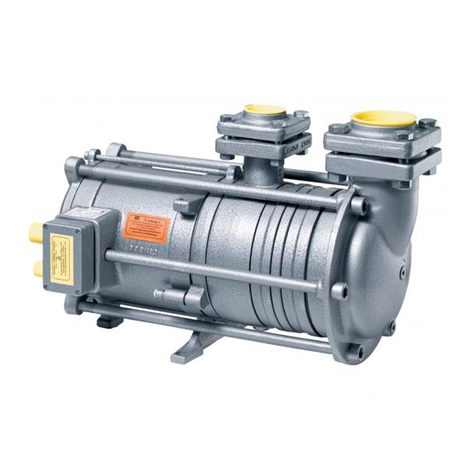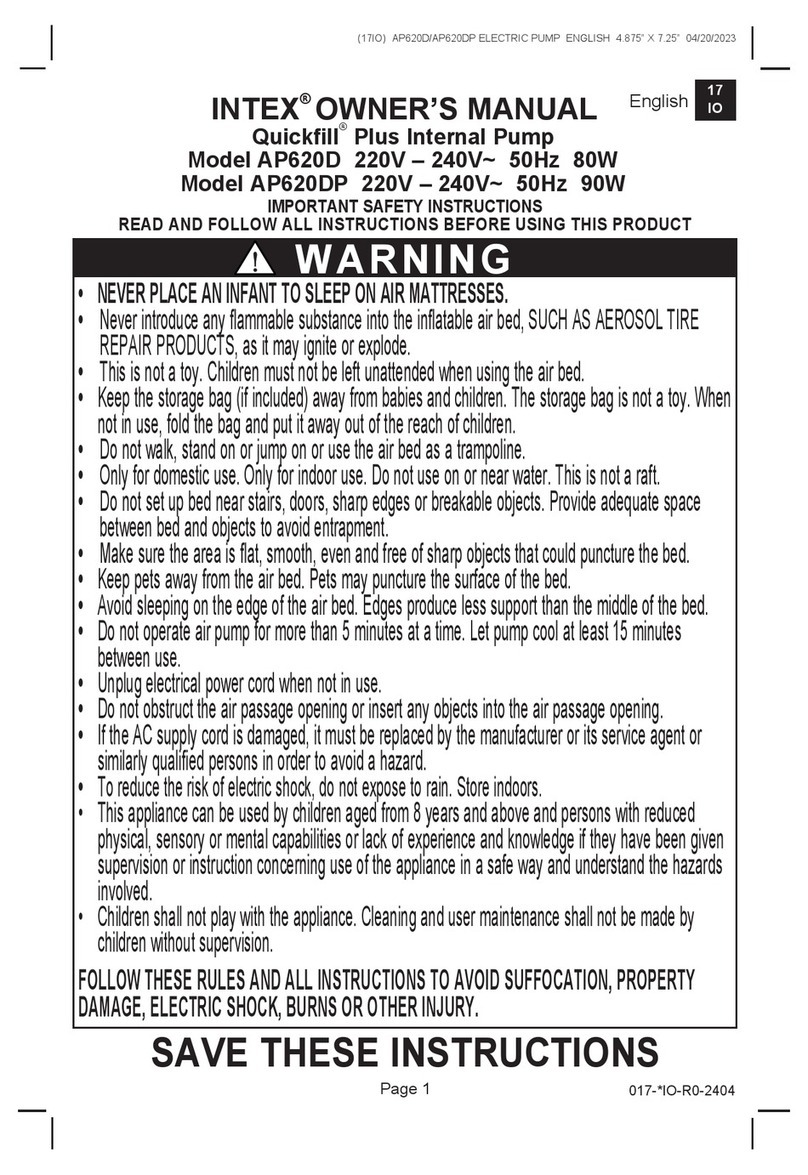SKV-tec GmbH Operating Instructions
2.1 Intended use
•All provisions of this manual, including all safety
instructions have to be observed
•Inspection and maintenance intervals have to be
complied with
•he unit have to be operated exclusively for the
delivery of approved media. It is used for
compressing, conveying and suction of following
approved media:
◦dry air/gases, which are neither explosive,
inflammable, aggressive or toxic
◦Air or air-steam mixtures containing no solids. If
there are small amounts of fine dust a
corresponding filter has to be provided.
he rolling bearings used are sealed on both sides
only with shields. herefore they have to be changed
regularly as instructed in Chapter 7.3!
◦For media with a density greater than air (higher
thermal and mechanical loading on the machine)
the responsible representation of the SKV-
tec GmbH has to be contacted!
•he unit is for continuous operation. For this
purpose, it has to be ensured that waste heat can be
delivered freely to the environment and that a certain
minimum gas flow rate is guaranteed. Furthermore,
frequent switching operations cause an increase of
the temperature of the winding. In case of more
than 5 start-ups of the side channel blower in an
hour (when spread across the hour, even less
when the switching operations happen in a short
time), the responsible representation of the SKV-
tec GmbH has to be consulted!
•he following scenarios have to be avoided:
◦Overheating: he unit must not be operated
above the maximum permissible differential
pressure (see nameplate)! If this danger exists,
a vacuum or pressure relief valve has to be
provided.
◦Motor damage:
he following parameters have to be observed:
the switching frequency of the unit, permissible
fluid and ambient temperatures
(nominal values: Fluid temperature = 15°C,
ambient temperature = 25°C)
he motor protection switch has to be set at the
nominal current as given on the nameplate.
By not respecting the permissible operating
temperatures, the temperature limit of the lubricating
grease of the rolling bearings may be exceeded.
•he unit is intended exclusively for professional use
•he handling of the unit is only permitted by qualified
personnel
Prior to handling of the side channel blower the
responsible staff for operation and servicing have to
completely read and understand the operating
instructions.
If in doubt, please contact the responsible representation
of the SKV-tec GmbH!
2.2 Potential misuse
•he operating limits of the unit concerning pressure,
temperature of the medium, density, viscosity and
velocity have to be observed and complied with
•he permissible density of the conveying medium
has to be respected, otherwise the unit will be
overloaded.
he power consumption of the motor increases with
the density of the conveying medium.
•Avoid sudden changes in the pressure of the
transported gas
•Sudden changes in the temperature of the
transported gas have also to be avoided
•Unauthorized opening of the unit will void any claims
for defects
•If the unit is not approved for the requested use,
operation is prohibited in the following scenarios
◦Operation in rooms where explosive gases may
be present
◦Extracting, delivering or compressing of
explosive, inflammable, aggressive or toxic
media
2.3 General safety instructions
he unit is designed and manufactured according to the state-
of-the-art of technology and the generally acknowledged rules
of safety. Nevertheless through exposure to the unit, danger to
the well-being or even the life of the user or third parties as
well as damage to the unit may occur.
herefore, the following guidelines have to be observed:
•he unit may only be operated in a technically
flawless condition and in compliance with the
regulations, safety precautions and warnings
included in this manual.
•Ensure that this manual and related documents are
complete and readable. In addition, make sure that
the staff has access to these documents at any time.
•Refrain from any operating mode which brings the
staff or third parties at risk
•In case of error which impacts on safety, immediately
shut down the unit and consult the person
responsible for fault diagnosis.
07/2018 SKV-Nx/-Hx-Series 5/30





















